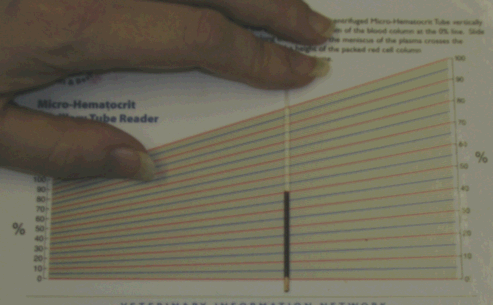The term hemorrhagic gastroenteritis basically means stomach and intestine inflammation with bleeding. This kind of bleeding inflammation might be seen in patients with parvovirus infection, pancreatitis, inflammatory bowel disease, or any number of other conditions but when the term HGE is used, it usually refers to a more specific canine syndrome and is an entity in and of itself. To clarify terminology, HGE has been renamed AHDS, which stands for acute hemorrhagic diarrhea syndrome. Because this change in nomenclature is recent, you may hear veterinary personnel using either term, but regardless they are referring to the specific syndrome that we will now describe.
Acute hemorrhagic diarrhea syndrome is a potentially life-threatening intestinal condition of an otherwise healthy dog, which manifests as sudden onset bloody, watery diarrhea. The symptoms are extremely dehydrating, often much more than expected from the amount of diarrhea, and if it is not promptly treated, the dog can go into shock and die.
Vomiting is often part of the syndrome. In fact, 80% of patients experience vomiting approximately 10 hours before the dramatic bloody diarrhea, and about half the time, vomiting contains obvious blood. The good news is that with hospitalization and treatment, most dogs recover rapidly. It is crucial to identify AHDS and rule out other serious conditions promptly so that the dog can get the correct treatment and the pet’s family can have proper expectations.
Smaller dog breeds seem to have a predisposition towards AHDS though any dog can be affected. Stress and hyperactivity seem to be predisposing factors.
How is this Condition Diagnosed?
There are no specific tests for AHDS, but a test called a packed cell volume (also called PCV or hematocrit) helps make the diagnosis. This test can be performed in most veterinary hospitals using a few drops of blood. The percentage of the blood volume made up of red blood cells is measured. A normal PCV for a healthy dog would be 37-55%, meaning 37-55% of the blood volume should be red blood cells; the rest is fluid and white blood cells. When the patient becomes really dehydrated, there is less fluid in the bloodstream, and the percentage of blood fluid drops (and consequently, the percentage of red blood cells rises). In other words, the seriously dehydrated patient has a very high PCV.
The average AHDS patient will have a PCV of at least 57%. (It will even be greater than 60% in approximately 30% of patients.)
The measurement of the PCV also usually includes some sort of measurement of total protein (sometimes called total solids). In AHDS, the total protein measurement from the blood sample is paradoxically normal or low.
There are several aspects to the AHDS syndrome, and they do not all have to be there to make the diagnosis. The syndrome elements your veterinarian will be looking for are:
- Elevated PCV of 57% or more
- Relatively low total protein
- At least one episode of vomiting (with or without blood) approximately 10 hours before the diarrhea
- A watery, very bloody diarrhea that looks almost like pure blood

- Relatively young dog (median age is five years)
- Relatively small dog (median size 25 lbs)
- Rapid response to intravenous fluids
As noted, there are many causes of bloody diarrhea like this, including an intestinal foreign body that requires surgery. Expect your veterinarian to need other tests to rule out other potentially more serious conditions.
What Causes AHDS?
There are still many unknown factors, but the cause appears to begin with infection from an intestinal bacterium called Clostridium perfringens Type A. A PCR test for Clostridium perfringens Type A can be used to determine for sure. This organism produces two toxins called NET E and NET F, which are different from the usual Clostridial enterotoxin that is well known to cause diarrhea. The toxin ulcerates the intestinal lining, and the intestinal blood vessels become permeable to fluid. In this way, fluid is lost into the intestine, dehydrating the patient, and the PCV rises while the ulcers are responsible for the bleeding.
Treating AHDS
The heart of therapy is aggressive fluid replacement. The idea is to get the PCV back to the normal range and keep the patient out of shock. Medication for nausea and pain control are included as is a low-fat diet as soon as the patient is willing to eat. As dramatic as the diarrhea is, most patients have an equally dramatic improvement in the first 24 hours of hospitalization and the average dog is out of the hospital after three days total.
Antibiotics are surprisingly controversial in this syndrome, and their use depends on many patient factors (such as whether or not there is a fever, white blood cell count, whether or not the expected improvement is achieved, etc).
The stool can be expected to gradually return to normal over about one week.
Probiotics (cultures of healthy bacteria) have been recommended to help repopulate the bowel, with “good” bacteria which improves the function of the intestines. They may be recommended for 2-4 weeks, and your veterinarian will let you know how long to give probiotics.

